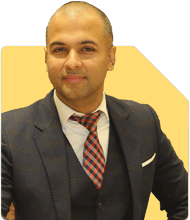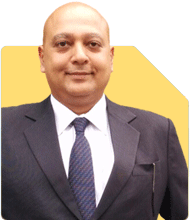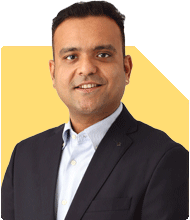Harsh Bharwani | Answer |Ask -Follow
Entrepreneurship Expert - Answered on Feb 27, 2023
As CEO and managing director, he leads the international business and employability initiatives at the computer networking institute, Jetking Infotrain Limited.
After graduating from Delhi University, Bharwani joined the family business in 2010 and set up operations in the US and Vietnam.
He has trained over three lakh students in employability, confidence and key life skills.... more

My daughters is in 12 with humanities. She is interested in designing- product designing Give few option of best private institute in india and abroad Is it a promising field or vfx is better .
Gaming and Metaverse Design: This has to be the best course for your daughter. It's one of the 1st ever industry-certified gaming & metaverse design course. The course will teach both product design and VFX so once your daughter graduates from the course, you can take the decision or let her decide which one out of the 2 to choose.
The course also comes with a 100% job guarantee and is in a fast-growing industry. The metaverse industry is expected to become a $1 trillion industry by 2030 so getting your daughter early into this reap rewards in the long term.
In terms of whether product design or VFX is a better field, it ultimately depends on your daughter's interests and career goals. Both fields have promising career prospects in the Metaverse industry and offer unique opportunities for creative expression.
Product design would involve designing virtual or immersive environments in metaverse platforms like Roblox or Decentraland, creating mini-games in Metaverses, and creating Augmented or virtual reality experiences and/or NFTs (non-fungible tokens).
VFX involves creating special effects and animations in virtual environments. If your daughter is interested in both fields, she may want to consider enrolling in the course - "Gaming and Metaverse Design" to explore both these options. Learning about both or doing an internship will help the both of you to decide which route to take.
You may like to see similar questions and answers below
Sushil Sukhwani | Answer |Ask -Follow
Study Abroad Expert - Answered on Nov 22, 2023
Rohit Gupta | Answer |Ask -Follow
Edtech/Online Education Expert - Answered on Feb 15, 2024
Nayagam P P |10849 Answers |Ask -Follow
Career Counsellor - Answered on Nov 13, 2024
Radheshyam Zanwar |6731 Answers |Ask -Follow
MHT-CET, IIT-JEE, NEET-UG Expert - Answered on May 26, 2025
Radheshyam Zanwar |6731 Answers |Ask -Follow
MHT-CET, IIT-JEE, NEET-UG Expert - Answered on Jul 13, 2025
Dr Dipankar Dutta |1836 Answers |Ask -Follow
Tech Careers and Skill Development Expert - Answered on Dec 05, 2025
Ulhas Joshi |280 Answers |Ask -Follow
Mutual Fund Expert - Answered on Dec 05, 2025
Dr Dipankar Dutta |1836 Answers |Ask -Follow
Tech Careers and Skill Development Expert - Answered on Dec 04, 2025
Ravi Mittal |676 Answers |Ask -Follow
Dating, Relationships Expert - Answered on Dec 04, 2025
Anu Krishna |1745 Answers |Ask -Follow
Relationships Expert, Mind Coach - Answered on Dec 04, 2025
Anu Krishna |1745 Answers |Ask -Follow
Relationships Expert, Mind Coach - Answered on Dec 04, 2025
Mayank Chandel |2562 Answers |Ask -Follow
IIT-JEE, NEET-UG, SAT, CLAT, CA, CS Exam Expert - Answered on Dec 04, 2025
Mayank Chandel |2562 Answers |Ask -Follow
IIT-JEE, NEET-UG, SAT, CLAT, CA, CS Exam Expert - Answered on Dec 04, 2025
Mayank Chandel |2562 Answers |Ask -Follow
IIT-JEE, NEET-UG, SAT, CLAT, CA, CS Exam Expert - Answered on Dec 04, 2025
Mayank Chandel |2562 Answers |Ask -Follow
IIT-JEE, NEET-UG, SAT, CLAT, CA, CS Exam Expert - Answered on Dec 04, 2025


























